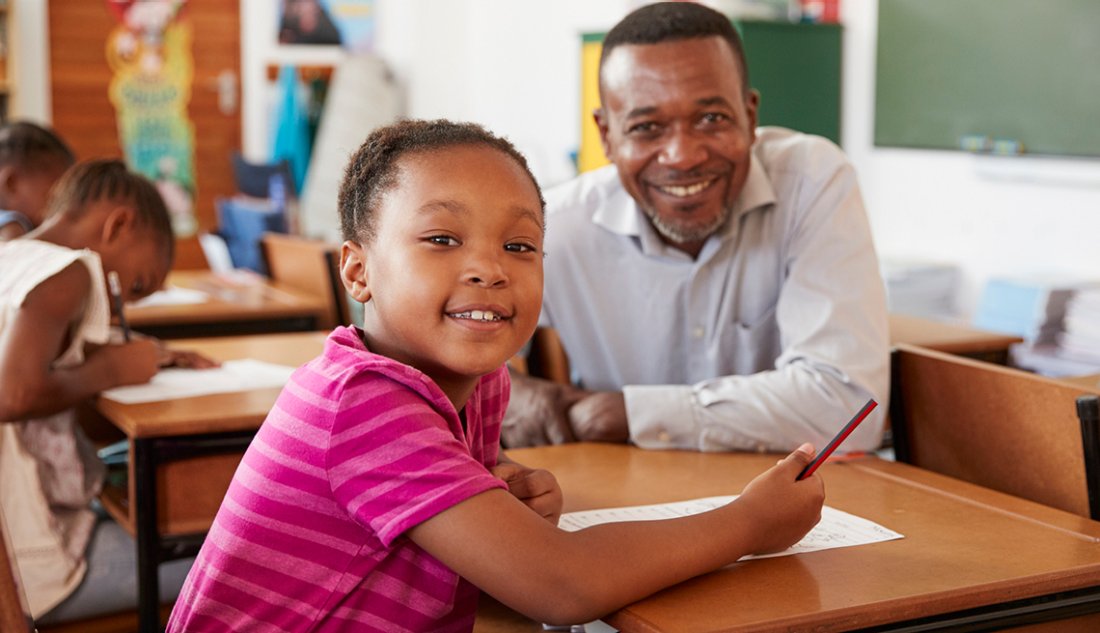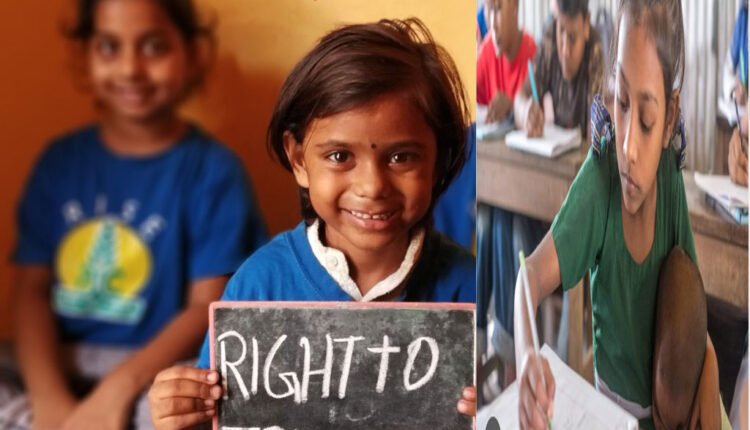Child Rights in Education Desk: Empowering Young Minds
Child rights in education desk ensures the protection and promotion of children’s rights in the field of education. Children have the right to education, which includes access to quality education, non-discrimination, active participation, and protection from violence, abuse, and exploitation.
Education plays a crucial role in a child’s overall development, empowering them and providing them with opportunities for a better future. However, various challenges such as poverty, gender disparities, armed conflicts, and inadequate resources hinder the realization of these rights.
Therefore, it is imperative to advocate for policies and practices that safeguard child rights in education, ensuring that every child has the opportunity to learn and thrive. By fulfilling these rights, we contribute to building inclusive societies where children can reach their full potential.
The Importance Of Child Rights In Education
Child rights in education are of utmost importance in ensuring a bright future for every child. Access to education is a fundamental right for all children, regardless of their background or circumstances. By providing equal opportunities for education, we can help bridge the gap between the privileged and the underprivileged.
Promoting quality education is crucial for the holistic development of children. It not only equips them with knowledge and skills but also instills values, fosters creativity, and enhances critical thinking. Quality education lays the foundation for a prosperous and inclusive society.
| Key Aspects | Benefits |
|---|---|
| Equal access to education | Empowers marginalized children |
| Quality teaching and learning | Enhances cognitive abilities |
| Inclusive education | Promotes diversity and tolerance |
Ensuring child rights in education requires collective efforts from governments, policymakers, educators, parents, and communities. We must strive to create an enabling environment that supports and nurtures every child’s right to education, regardless of their socio-economic status, gender, disability, or ethnicity.
Investing in child rights in education is not only a moral obligation but also a smart investment for a brighter future. Let us work together to build a world where every child has the opportunity to thrive and reach their full potential.
The Right To Education: A Fundamental Child Right
The Right to Education is a fundamental child right that ensures every child has the opportunity to receive an education. It is defined as the right of every individual to attend school, learn and receive free education. This right is recognized internationally and has been adopted by many countries. The right to education encompasses several important aspects, including access to education for all children, regardless of their background or social status.
| Defining the Right to Education | Ensuring Inclusive and Equitable Education Opportunities |
|---|---|
| The right to education encompasses several important aspects, including: | In order to ensure inclusive and equitable education opportunities for all children: |
| – Access to education for all children | – Eliminate discrimination in education |
| – Quality education that meets the needs of children | – Provide inclusive and safe learning environments |
| – Free education at the primary level | – Promote gender equality in education |
These aspects are crucial in guaranteeing that every child has the opportunity to receive a quality education. By ensuring inclusive and equitable education opportunities, we can contribute to the overall well-being and development of children, paving the way for a brighter future.
International Laws And Conventions Safeguarding Child Rights In Education
The United Nations Convention on the Rights of the Child (UNCRC) is an international legal framework that protects the rights of children, including their right to education. The convention was adopted in 1989 and has been ratified by almost all countries in the world. It sets out the fundamental rights that every child is entitled to, including the right to education. Under the UNCRC, children have the right to free and compulsory primary education, access to secondary education, and access to higher education based on their abilities. The convention also emphasizes the importance of a quality education that promotes the development of the child’s personality, talents, and mental and physical abilities.
In addition to the UNCRC, the Sustainable Development Goals (SDGs) also focus on promoting education for all children. In particular, SDG 4 aims to ensure inclusive and equitable quality education and promote lifelong learning opportunities for all. This goal emphasizes the importance of providing inclusive and quality education that is accessible to all children, without discrimination. It recognizes that education is a fundamental right and a catalyst for achieving other development goals.
Challenges Hindering Child Rights In Education
Socioeconomic barriers and poverty have a significant impact on access to education for children. Many families struggle to afford the costs associated with schooling, such as uniforms, textbooks, and transportation. This financial burden hinders their ability to send their children to school or to continue their education beyond a certain level.
Gender disparities and discrimination also pose challenges to child rights in education. In many societies, girls face cultural norms and gender biases that discourage or prevent them from pursuing education. They may be expected to prioritize household chores or early marriage over schooling, limiting their opportunities for personal growth and development.
To ensure child rights in education are upheld, it is crucial to address these challenges head-on. Efforts should be made to provide financial support to families in need, including scholarships, subsidies, and free education initiatives. Additionally, promoting awareness and challenging societal norms that perpetuate gender discrimination is essential for creating an inclusive educational environment for all children.
Strategies For Strengthening Child Rights In Education
Policy reforms and investment in education systems are crucial steps in ensuring child rights in education. By implementing effective policies, governments can create an enabling environment where children have access to quality education. These policies should focus on removing barriers such as gender inequality, poverty, and discrimination.
| Policy Reforms | Investment in Education Systems |
|---|---|
| Enact laws to protect child rights in education | Increase budget allocation for education |
| Promote inclusive education for all children | Improve infrastructure and facilities in schools |
| Address gender disparities in education | Invest in teacher training and professional development |
| Ensure access to quality education for children with disabilities | Support research and innovation in education |
Moreover, community engagement plays a vital role in addressing barriers to education. Engaging parents, local leaders, and communities can create awareness and demand for education, leading to increased enrollment and retention rates among children. Community involvement also enhances accountability and ensures that child rights are upheld.
By adopting these strategies and investing in child rights, we can create a future where every child has equal opportunities to learn and succeed.
Promoting Safe And Inclusive Learning Environments
Child rights in education are crucial to foster safe and inclusive learning environments. Creating child-friendly schools and classrooms is a key aspect in promoting these rights. As educators, it is our responsibility to ensure that educational settings prioritize the well-being and development of every child.
Child-friendly schools focus on providing a nurturing and supportive environment where children can thrive. Safety measures such as proper infrastructure, clean sanitation facilities, and adequate security must be in place to protect the children from potential hazards. Classroom setups should be inclusive, allowing for diverse learning styles and accommodating children with disabilities.
Tackling bullying and violence is another critical aspect of promoting child rights in education. Schools should implement anti-bullying programs and develop policies that address aggressive behavior and harassment. It is essential to encourage a culture of respect and empathy, where students feel safe and supported.
By actively promoting safe and inclusive learning environments, we can ensure that all children have equal access to education and are protected from any forms of discrimination or harm.
Empowering Children: The Role Of Stakeholders In Upholding Child Rights In Education
Child rights in education are crucial for the holistic development and well-being of young individuals. The role of stakeholders, including government policies and civil society organizations, is instrumental in upholding these rights.
Government policies play a central role in ensuring access to quality education for all children. It is essential for policymakers to create inclusive and equitable frameworks that address the unique needs and challenges faced by children. Additionally, effective implementation of these policies is vital to ensure their impact reaches the grassroots level.
Civil society organizations (CSOs) also play a key role in advocating for child rights in education. They provide an important platform for raising awareness and influencing policy decisions. CSOs engage in advocacy efforts to promote access to education, improve school infrastructure, and enhance the overall learning environment for children.
By working hand in hand, government institutions and civil society organizations can empower children by safeguarding their right to education and creating an enabling environment for their overall development.

Credit: www.aarp.org
Monitoring And Evaluation Of Child Rights In Education
Monitoring and Evaluation of Child Rights in Education
One crucial aspect of ensuring accountability and transparency in education systems is the monitoring and evaluation of child rights. This process aims to assess the impact and progress of child rights in education, enabling evidence-based decision-making and promoting inclusive educational practices.
Impact assessment plays a vital role in understanding the effectiveness of policies, programs, and interventions on the realization of child rights. Through rigorous evaluation, stakeholders can identify gaps, strengths, and areas for improvement, leading to targeted actions that uplift the quality of education and children’s well-being.
To track progress, comprehensive data collection mechanisms need to be in place, ensuring that the information gathered is reliable, accurate, and representative. This data can be used to identify trends, patterns, and disparities, enabling policymakers, educators, and communities to make informed decisions towards inclusive and equitable education.
| Key Concepts | Benefits |
|---|---|
| Monitoring | Identifies gaps and challenges Facilitates evidence-based decision-making Enhances accountability |
| Evaluation | Assesses impact and effectiveness Identifies areas for improvement Promotes inclusive educational practices |
| Impact Assessment | Enables evidence-based decision-making Supports targeted actions Improves education quality |
| Progress Tracking | Identifies trends and patterns Addresses disparities Facilitates informed decision-making |
Frequently Asked Questions On Child Rights In Education Desk
What Is The Right To An Education?
The right to an education is the entitlement for all individuals to receive a high-quality education. It ensures that everyone has access to learning opportunities, regardless of their background or circumstances. Education is essential for personal development, social progress, and the overall well-being of individuals and communities.
What Deped Order Is The Anti Bullying Act?
The Anti-Bullying Act is detailed in DepEd Order No. 40, series of 2012.
What Is The Children’s Right To Education In Scotland?
Children in Scotland have the right to education. They have access to free primary and secondary education, which is compulsory from ages 5 to 16. This ensures that all children have the opportunity to learn and develop their skills for a better future.
What Is The Child’s Right To Education In The Uk?
Every child in the UK has the right to receive an education. It is a legal requirement for parents to ensure their child attends school or receives appropriate education otherwise. Children have the right to access a free and suitable education that meets their individual needs.
What Are Child Rights In Education?
Child rights in education refer to the fundamental entitlements and protections that children have in accessing quality education.
Conclusion
Ensuring child rights in education is crucial for the holistic development of our society. Every child deserves equal opportunities, access to quality education, and a nurturing environment. By promoting child rights, we empower the future generation to thrive and contribute to our ever-evolving world.
Let us come together, advocate for child rights in education, and create a brighter tomorrow for all children.
For more information about education just click here.


